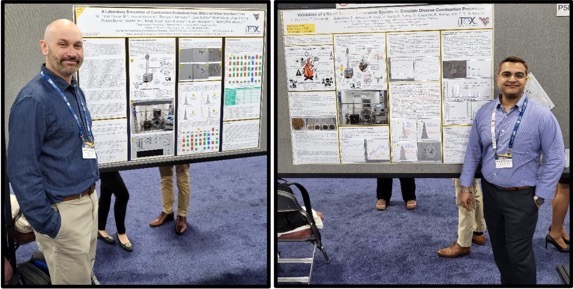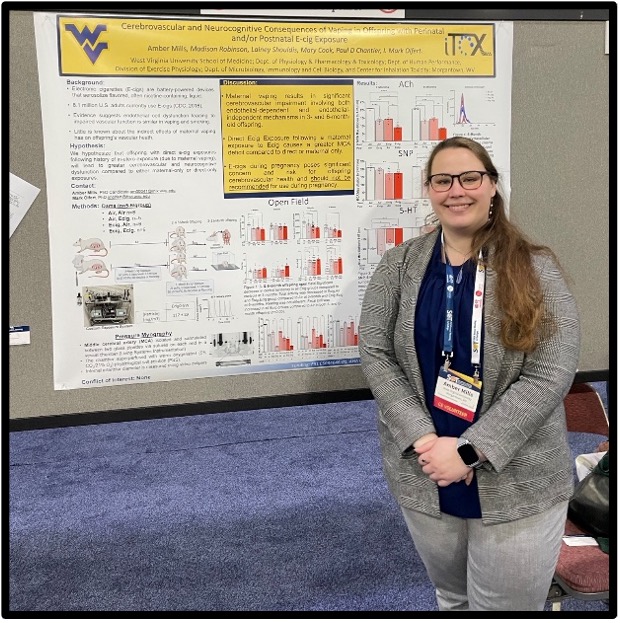Robust Department Presence and Recognition at Society of Toxicology National Meeting
Laboratories from the Department of Physiology, Pharmacology & Toxicology, and the Center for Inhalation Toxicology (iTOX) had a strong presence at the national Society of Toxicology (SOT) meeting in Salt Lake City, Utah (March 10-14). Faculty and laboratory members presented in numerous platform and poster sessions throughout the week and received multiple awards and chaired diverse sessions.

Nurkiewicz Lab
Dr. Nurkiewicz began the week presenting in one of the main symposium sessions “Burn Pit and Wildfire Aerosols – Chemical Composition and Health Consequences: What is in Common?” Laboratory members Anand Ranpara and Travis Goldsmith presented two posters in the “Air Pollution: Particulate Matter” session. This was the public debut of the iTOX Combustion Generator System. Nurkiewicz later chaired a platform session “Wildfire and Wood Smoke”, and was recognized (inaugurally) with the Leadership, Experience, Application and Practice (LEAP) award from the Women in Toxicology Special Interest Group

Hussain Lab

Dr. Salik Hussain gave a talk in another main symposium session “Defining Susceptibility to Ozone: A Window into Exposure Effects in a Changing Climate”. He shared recent findings from his group identifying NLRX1 as a novel therapeutically targetable mediator of air pollution-induced inflammation and lung function decline in humans and mice. Hussain was also recognized by the Nanoscience and Advanced Materials Specialty Section for his service and leadership to the section in various positions (President, Past President, Vice-President Elect, Vice President and Councilor) during the past five years. Hussain Lab member Nina Olivia Tan (undergraduate in IMMB Program) attended the meeting and presented a poster on the mechanisms of pulmonary inflammation after inhalation co-exposure to ultrafine particles and ozone
Bowdridge Lab

Teresa Gluth, MD/PhD student in the Bowdridge laboratory, presented her work in the Developmental Toxicity-Diversity of Models and Mechanisms platform session entitled, “Inhibiting Xanthine Oxidase Protects Against Generational Outcomes Following Gestational Nano-Titanium Dioxide”. Additionally, Dr. Russell Hunter (postdoctoral fellow), Allison Dunn (Pharmacy student), and Victoria Nist (WVU Honors EXCEL student) all presented posters on their various research projects in the laboratory. Dr. Hunter was recognized for his service as the graduate student representative in the Cardiovascular Toxicology Specialty Section. This was the first SOT meeting for Teresa, Allison and Victoria!
Olfert Lab

Dr. Olfert’s lab had four very well attended poster presentations, which included graduate and undergraduate students as presenting authors. Amber Mills (PhD candidate in CIP Program) received an SOT Student Travel award for her poster on Cerebrovascular and Neurocognitive Consequences of Vaping in Offspring with Perinatal and/or Postnatal E-cig Exposure. Madison Robinson (MS candidate in the Exercise Physiology Program) presented a poster on Vascular Recovery Window Following a Chronic Exposure to Electronic Cigarettes. Lainey Shouldis (undergraduate in IMMB program) presented her poster on In-utero Exposure Alters Extracellular Vesicles and Influences Endothelial Cells in Culture, and Mary Cook (undergraduate in Exercise Physiology Program) presented a poster on Dose-dependent influence of electronic cigarette wattage on aerosol mass concentration and formaldehyde emissions are associated with peripheral vascular dysfunction.